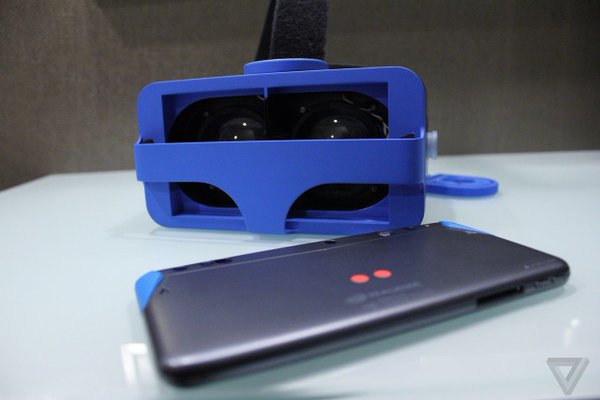One major issue with existing VR headsets is that they lack external environmental awareness, locking users into a semi-stationary position for their VR experiences. While Occipital seeks to solve this by allowing anyone to user their newly announced Structure Core embeddable 3D sensor and Bridge Engine to give spatial computing to everything from smartphones to drones and VR headsets, Intel has partnered with a small headset company called IonVR to make VR go mobile.

IonVR is a $229 3D printed, Google Cardboard-style headset, powered by smartphones between 4.5 and 6 inches in size. Unlike other Cardboard-type designs, however, IonVR boasts what they call MotionSync, which they say “nearly eliminate[s]” motion sickness. With Intel’s RealSense Smartphone Developer Kit, the Google Project Tango prototype unveiled last year, this headset is given spatial mapping abilities. The Android-powered Smartphone Developer Kit uses a number of sensors to collect visual information up to three meters away to give the phone the power of depth. Combined, IonVR and the 3D sensing smartphone allow users to walk around a virtual environment, as the front-facing camera tracks their position and obstacles are registered as grey static.

Paul Zhao, product marketing manager of Intel’s Perceptual Computing division, said of the partnership, “A controller is great, but we’ve had controllers since the age of Atari and Nintendo. If you’re immersed visually in a virtual world, so should the rest of your interaction, movement as well as hand tracking.” Demoed at CES were a painting app and 3D environment, but the implication for 3D modeling is obvious. Unfortunately, The Verge‘s Adi Robertson says that she still got nauseous from the device.
IonVR and the Intel RealSense Smartphone Developer Kit will go out this year, providing further evidence that the mixed reality ecosystem is starting to coalesce in 2016. It will be interesting to see how Google’s Project Tango will differ from the Smartphone Developer Kit and how an independent company like Occipital will stand up to a giant like Intel. Either way, the 3D world is going to get real this year.


